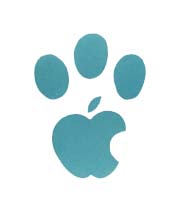Belkin just lost any chance of getting business from me in the future.
It seems that with the latest firmware update to their routers, they have implemented a “feature” enabling unexpected, intrusive, unwanted advertising. Every eight hours, one http request (the information your browser sends when requesting a particular web page) is hijacked and redirected to an advertising page for a new parental control feature.
After the upgrade, on all our systems (wired or wireless), valid http requests are, for certain values of occasionally, redirected to a Belkin ad page!!!!
>
[…]
>
It seems the router now supports a parental control and the market droids at Belkin got the bright idea of equipping the router with intrusive nagware. Of course, I have this strange notion that routers should pass data unmolested by marketeers! There is a “No Thanks” link on the page. Now I have to opt-out from commercials from my router??!!
This behavior was later confirmed by Eric Deming, from Belkin.
Update: Eric Deming’s post has mysteriously disappeared from Google Groups. Damn, I knew I should have quoted from it as well.
Update 2: There is another post from Eric apologizing and claiming that there will be a patch soon. I’m still curious about the earlier post that suddenly went missing.
Update 3: Bingo. One of the posts in the /. thread about this contains the full text of Eric’s first message.
This is nasty. At best, it’s low-down, slimy, intrusive, annoying marketing. At worst, it could cause everything from difficulties with web-based systems (imagine having the redirect kick in in the middle of a transaction on your bank’s website) to possible security holes (such as hackers taking control of the redirect [through affecting the routers, Belkin’s server, or DNS servers in between] and including a trojan or virus in the new target page).
Bye-bye, Belkin.
(via The Register, via the usual suspects)



